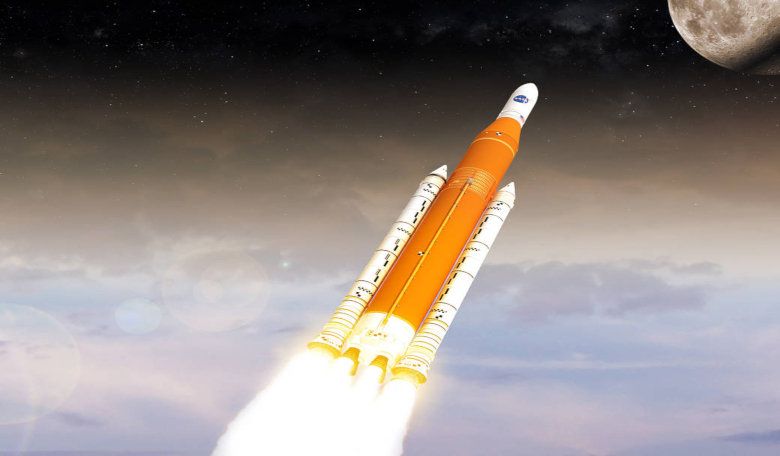US astronauts will have to wait until at least 2025 before heading to the Moon, say NASA officials, after the agency announced that the 2024 date set by former president Donald Trump, cannot be met.
NASA had already been working to return astronauts to the lunar surface by 2028, however in 2019, the White House directed the agency to speed up its plans for its Artemis III mission, to target 2024 instead; a timescale that many at the time saw as unachievable due to funding issues and technological constraints.
Since then, a global pandemic, lawsuits over its Human Landing System (HLS), delays with the Orion capsule and uncompromising budget cuts, have all acted to compound progress, say NASA, meaning the Moon2024 deadline is no longer viable.
“Returning to the Moon as quickly and safely as possible is an agency priority. However, with the recent lawsuit and other factors, the first human landing under Artemis is likely no earlier than 2025”, NASA Administrator Bill Nelson told reporters yesterday.
Along with delays, Nelson also revealed a substantial cost increase for Orion during the media teleconference.
Initially reported to cost $6.7 billion, expenditure for the spacecraft that will transport the crew to the lunar surface has grown to $9.3 billion.
Rising costs were attributed in part to pandemic-related issues as well as the need for demonstrating rendezvous and proximity operations that will be used with the HLS lunar lander on Artemis III. “There were a lot of requirements changes,” said Jim Free, NASA associate administrator for exploration systems development.
Despite the delays, Nelson said the agency remained committed to sending humans to the moon. "Going forward, NASA is planning for at least 10 Moon landings in the future, and the agency needs significant increases in funding for future lander competition, starting with the 2023 budget," said Nelson.
The Human Landing System (HLS) is an integral part of the Artemis Programme, but so far the least-developed.
The project has been stymied by a significant shortfall in allocated funding – only $850 million was assigned to HLS in fiscal year 2021 instead of the requested $3.37 billion by NASA – a development that lead the agency to award a single $2.9 billion contract to SpaceX to start development.
The award was quickly contested by rival bidders of the contract, Blue Origin, first to the Government Accountability Office (GAO) and then to Court of Federal Claims. It lost both times, but because of the protest, SpaceX was unable to start work developing the lander.
"We're pleased with the US Court of Federal Claims' thorough evaluation of NASA's source selection process for the human landing system (HLS), and we have already resumed conversations with SpaceX. It's clear we're both eager to get back to work together and establish a new timeline for our initial lunar demonstration missions," Nelson said at the teleconference.
Even with a revised timeline for both HLS and the Artemis III mission, 2025 is still an extremely optimistic schedule.
Before a lunar landing gets underway, Artemis I and II first need to occur; Artemis I is a test launch of SLS and an uncrewed Orion, which has now been delayed until at least February 2022, while Artemis II is a test flight with a crew. That was planned for April 2023, but Nelson said yesterday it will slip to at least May 2024.
Artemis III on the other hand depends on the completion of many different, interdependent projects including docking of Orion with HLS, updated spacesuits, and potentially the development of The Gateway, which if constructed, will be another port Orion can dock with.
This ambitious mission therefore will require extensive coordination across these projects to ensure their systems will work together safely and seamlessly; a task that is made more difficult as each stage is contingent on funding - only funding from fiscal year 2012 to Artemis II is included in the “rebaselined” funding for the Artemis programme.
NASA however, seem undeterred. “What we're doing is one of the great undertakings of humanity - the scope of it from SLS to Orion to Gateway, human landing systems, ground systems, communications, spacesuits and more - its staggering. First at the Moon, and then at Mars,” says NASA Deputy Administrator Pam Melroy. “But we're NASA, and we're rising to the challenge."











